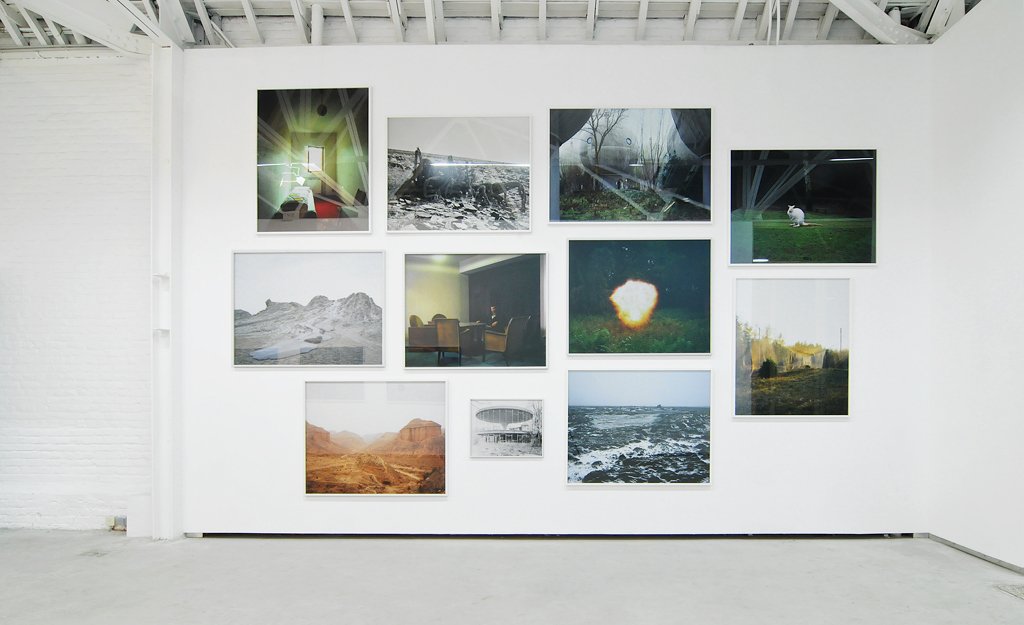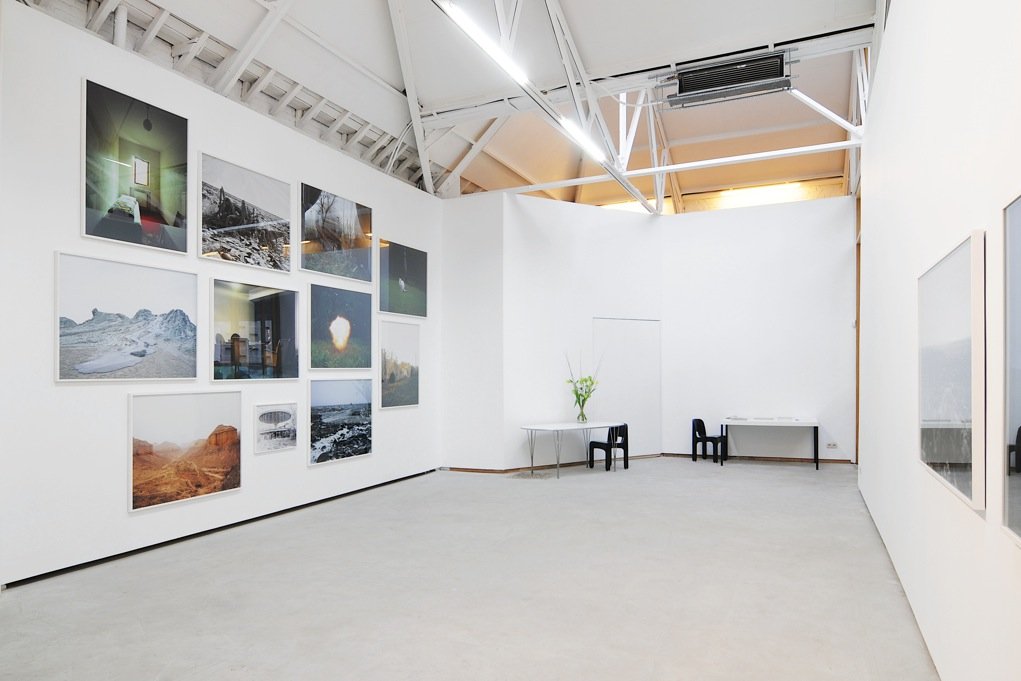Geert Goiris: The Unreliable Narrator
5 February–9 April 2010, Brussels
Geert Goiris, LAIR, 2010
The Unreliable Narrator
One of the principal commonplaces about photography is that, more than any other art form, it is indissolubly linked to reality.
This ‘realism’ of photography not only stems from a prehistory of discourses around its truthfulness, but also results from the mediums inherent characteristics: a photograph after all doesn’t originate out of nothing, and can consequently never be an act of ‘pure’ creation’ — whatever that may be — but is always embedded in perceptible reality. Which is why photography, at least for many of us, delivers proof of a certain state of affairs: the photographer has been on the scene and has, with a minimal intervention, let physics do its work, causing facts to be ‘captured’ in a twodimensional image. Naturally, this image is not reality itself, but it does represent and document it. Just like ordinary language, such a photography is a system of signs that renders itself invisible while it makes content visible.
The prints Geert Goiris (Bornem, 1971) exhibits under the title ‘The Unreliable Narrator’ — a selection of older as well as newer works — seems to invert that classic starting position: photography does not make an actuality visible, but rather indicates the inevitable human presence in that actuality. As such, Goiris’ photo’s might provide apt evidence that reality wouldn’t even exist without a creature knowing the concept of ‘reality’. That is: each photograph shows what it doesn’t picture but always implies: that it is shot, that a human decision has preceded the image, that there is a perspective, a narrative mode. In Goiris’ photo’s it is not the reference (Where was this taken? What’s in it?) that matters, but the presence of a subject. This inevitably makes his photo’s the acts of an ‘unreliable narrator’ (after a term in literary theory), a human and subjective intervention that selects and orders, and in doing so ‘animates’ things.
This animated quality is explicitly present in Goiris’ work, as his images are in diverse ways saturated with a human gaze. In many of his photographs there is — as a result of, among others, photo-technical decisions — ambiguity about what exactly is being seen. A mud stream could be mistaken for lava. A cactus turns into a spider through association. Architectural constructions take on human traits. A landscape is split in two by a white line that indicates a real human presence (a curious construction) as well as the decision of the photographer to perceive that line as an element of composition. For Goiris, nature does not necessarily represent that part of existence that’s not designed by humans; above all it is one half of a human dichotomy that divides reality.
Geert Goiris, Ecologist Place, 2007
By their self-awareness, Goiris’ images pretend that reality, laid out by an unreliable narrator, is always innately subjective. At the same time, his work also speaks of a fascination with another, invisible form of ‘reality’, for the void an impossible reality without the ordering human subject would leave, for the landscape unfit for living, the deserted, which Goiris searches in a romantic gesture, like an explorer.
Sometimes this literally takes him to the end of the world: for the series ‘Whiteout’ for instance, he travelled to Antarctica (in this exhibition he presents one photo from this project: the image of a man caught in an all-embracing whiteness). In this way, the photographer becomes a privileged witness of that big Other that transcends our comprehension: a snowscape becomes a sublime absence, a hole in the ice becomes a hole in the image.
Goiris’ photographs might very well depict a human reality, they also generate an experience of insurmountableness. But also in being a ‘romantic’ Goiris could very well be an unreliable narrator. Couldn’t the sublime he searches for turn out to be a rhetorical operation in the end? Not a real presence, but the effect of an image?
By leaving questions like these unanswered, Goiris assumes a paradoxical position between subject and object, between the self and the real. Does the photographer merely project a personal order on reality by (also literally, during the act of photographing) choosing a point of view towards it? Or does reality at the same time impose her own vantagepoint? Where does the beholder start and does the perceived end? Out of the aporetic situation in which every viewer finds himself — a situation in which there is no absolute inside or outside — Goiris seeks to establish an order that is personal but also follows an inherent formal logic. This order is already present in the photographical decisions and compositions that follow from them, but also in the variable constellations in which Goiris hangs his images.
In these constellations, each photograph resonates — through formal links, hence not so much through the underlying story — in other images, bringing to life a continuous visual language, a gaze that exceeds separate gazes, a ‘world’ the photographer has made his own. This world is not a transcendent order in which each element is a part of a big metaphysical machine, but an aesthetic order that testifies of the decision of the artist to attribute meaning to the signs that surround us.
Koen Sels













